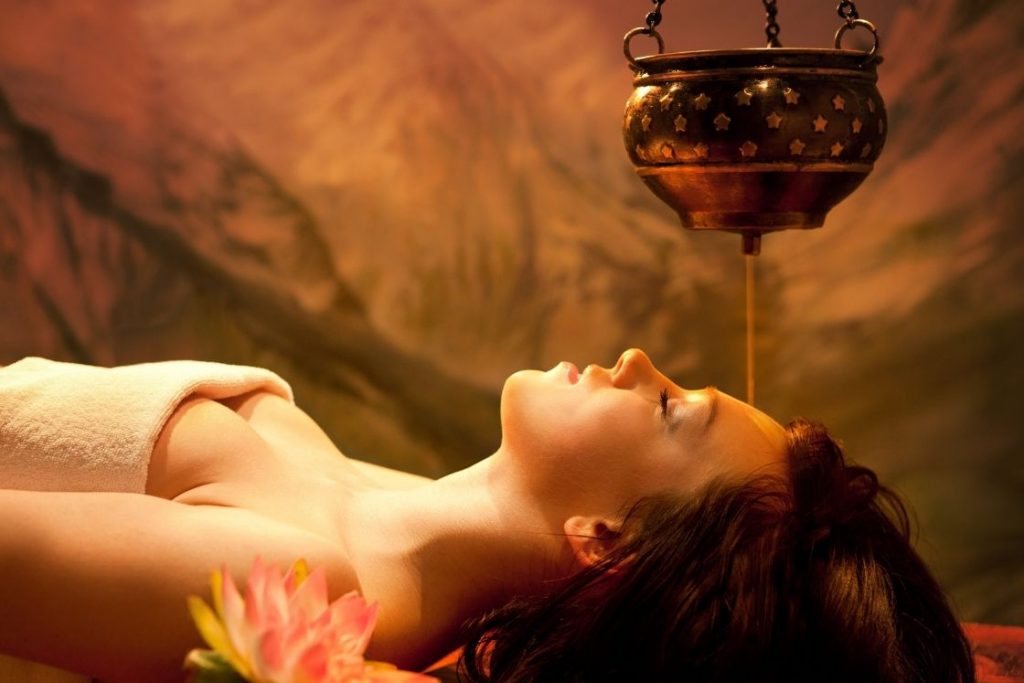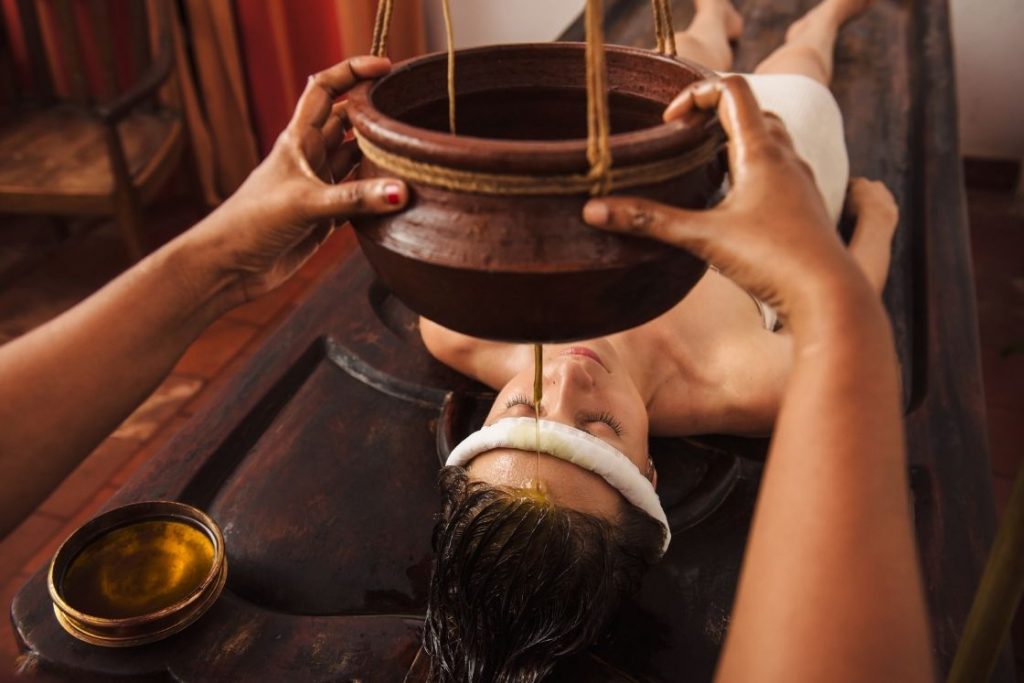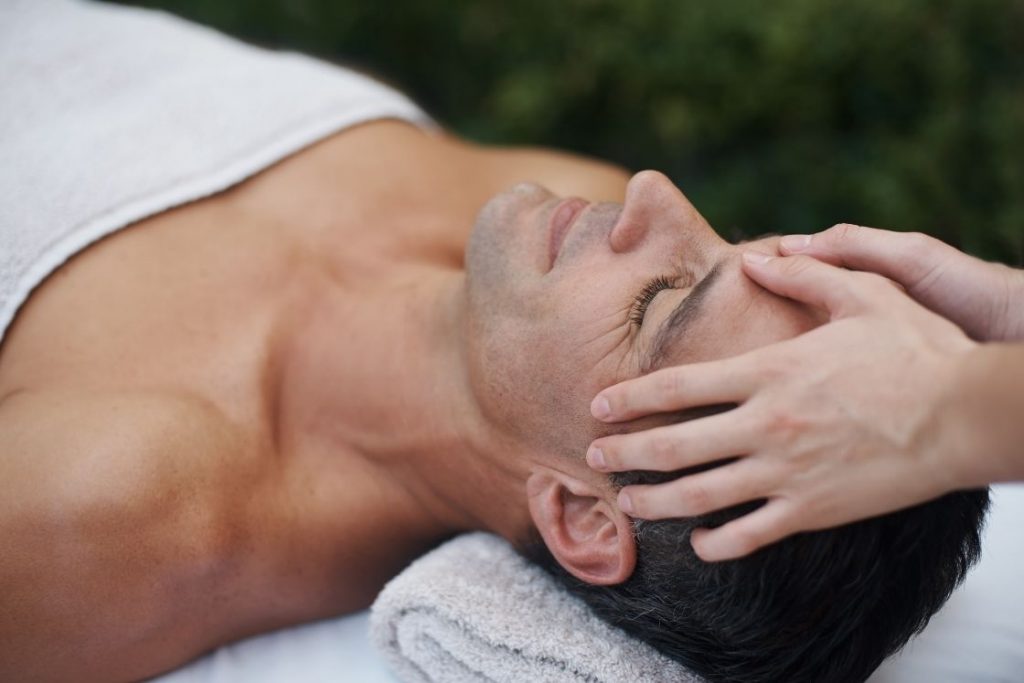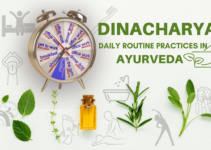
Ayurveda, which is also called the sister science of yoga, is not only about eating the healthy and right food to pacify your doshas. The Ayurveda is a dictionary of various herbs and plants that can remedy almost all possible diseases with a holistic approach.
One such ayurvedic treatment is the Panchakarma, a therapy that consists of 5 procedures.
Panchakarma therapy aids in removing toxins from the body and establishing a balance in doshas thus strengthening the immune system. It’s done in three stages.
- Purvakarma – Action taken ahead of main therapy
- Pradhanakarma – Actual treatment
- Paschatkarma – Action taken after main treatment
Purvakarma consists of different ayurvedic massage therapies focusing on the specific disease or parts of the body. Each of these massages comes with a range of physical and mental benefits. They are mostly done to stimulate and relax the muscles and joints in the body so that the herbs and oils can work deeply to eradicate the disease.
Among these massages, Shirodhara is one of the most sought after and commonly preferred therapy. You must have seen in many Ayurveda treatment videos of people lying on a wooden table and a stream of oil falling on their forehead from a metal or an earthen vessel. This is essentially what Shirodhara is.
What is Shirodhara?
The word Shirodhara is made up of two Sanskrit terms – shiro meaning head and dhara meaning flow.
Shirodhara is an Ayurvedic therapy in which medicinal liquid – such as oils, milk, ghee, buttermilk – is slowly poured in a stream on the forehead of the person lying over a table.
This is a head massage done before actual ayurvedic treatment begins. It comes in the category of Bahya Snehana (external oiling on the body) in Panchakarma therapy. After the procedure is complete, it is usually followed by a head, face, or whole body massage known as Abhyanga.
Shirodhara massage targets the forehead and sense organs, the area where nerves are highly concentrated. It helps treat psychosomatic diseases like stress, depression and mental fatigue.
The pressure of pouring liquid onto the forehead creates a vibration that reprogrammes brain waves. However, it’s the medicinal quality of the liquid that let it saturate the forehead and scalp and penetrates into the nervous system.
Ancient ayurvedic text Ashtanga Hridaya mentions shirodhara is very useful in headaches and other head-related diseases. In many Vata related disorders where sense organs are disturbed Shirodhara treatment is recommended. This treatment induces a relaxed state of mind thus regulating the circulation of prana energy.
Since the head is acting as the control point of most bodily activities, sense organs, and systems, it is essential to keep it at its top form. And shirodhara directly works on the various levels of mental health such as releasing negative energy, stress, anxiety, fear, and stimulating the nervous system.
Things to know before going for Shirodhara Treatment

While the shirodhara treatment may look and sound too easy, there are a number of aspects you need to look into before you decide to take this ayurvedic treatment.
Ayurveda is systematic science that doesn’t encourage you to randomly start following a practice. Just like medical science, it has some rules and procedures that have to be followed by expert and certified ayurvedic practitioners.
Before Shirodhara therapy begins, patient disease and body type will be diagnosed. The ayurvedic practitioners will perform a plethora of tests and examinations, in accordance with ayurvedic parameters and modern investigative methods. The patient’s prakriti (basic constitution that comprises the 3 doshas) and vikriti (the effect of external environment on the 3 doshas) will be determined and documented in detail.
Based on these examinations, it will be determined whether the disease is treatable through Shirodhara. If the treatment can be performed, an entire list of medicines, materials to be used, and treatment line-up will be explained to the patient.
In certain conditions, the patient may be asked to shave the head. Shirodhara yields better results after hair removal as a bald head will better absorb pouring liquid vibration.
Here also comes the part where the type of treatments is also decided.
Types of Shirodhara Therapy
The types are basically decided on the liquid that will be used during the treatment. There are typically three to four types of Shirodhara:
1. Taila Shirodhara – Taila means oil. In this, the practitioner will prepare a medicated oil using herbs for treatment. The ingredients are decided based on the prakriti and vikriti of the patient. Sesame oil, coconut oil, or any herbal oils are generally used here.
2. Ksheera Shirodhara – Ksheera means milk and as the name suggests, milk mixed with herbs is used as a means of medicinal liquid. The practitioner will boil 3 liters of milk, 6 liters of water, and approx. 750gm of medicinal herbs till the entire concoction comes down to 3 liters. It is then strained, cooled down, and, before using, is warmed again.
3. Takra Shirodhara – Takra is buttermilk that is used with Amalaki (a sour fruit).
4. Ghrita Shirodhara – Ghrita is ghee, which is also used with medicinal herbs or as it is. This type is generally preferred in the case of diseases caused by pitta or blood vitiation.
Other liquids that are also used for Shirodhara therapy are – sugarcane juice, honey, sugar water or sugar syrup, fermented herbal liquid, coconut water, or plain water.
Typically, all liquids are slightly warmed up before using however it will also be dependent on the dosha vitiation you have.
If you have a Vata disorder or predominance then the liquid will be warm and sesame oil will be used.
If you have pitta disorder then the liquid will be cold and often ghee is used.
Who cannot take shirodhara?
Although Shirodhara is an extremely safe and hygienic practice, there are certain conditions when it should be avoided.
- Pregnant women in their third trimester.
- If you have nausea, vomiting, fever, fatigue, or excessive sweating.
- In the case of any cuts or wounds in head.
- If you have a neck injury or any other head-related medical issue.
Such people should not take the Shirodhara treatment unless the ayurvedic and medical practitioner gives a green light.
Shirodhara procedure
In shirodhara therapy, you lay down on the wooden table and then the ayurvedic practitioner follows a set procedure.
They may ask you to shave your head so that it is easy to massage and pour oil.
Your BP, pulse, temperature, and other basics will also be checked. In case it is detected that you are experiencing cold, fever, congestion, menstruation, or any other type of ailment, the treatment may be postponed till you recover. This is done so that the treatment doesn’t aggravate the problems.
Before entering the room, you will recite some hymns and prayers and perform other holistic rituals for the success of the treatment.
Let’s see the procedure of Shirodhara treatment.
- You will lie down on a wooden table, also called the dhara table. The table often has an elevated portion to the rest the head or a folded towel or pillow may also be used.
- Abhyangam or full-body massage with warm herbal oils is given to relax the body and mind and enhance circulation. Special attention is given to the face, head, and neck.
- A cotton pad is placed on the eyes as a precautionary measure to avoid the flow of oils into the eyes.
- The stand, in which the dhara pot is hung, is placed near the head in a way that the distance between the nozzle or the wick in the vessel and the forehead is at least 4-6 inches.
- The pot is filled with warm oil or liquid with the stream starting to fall from the wick or nozzle. An attendant may also massage your head for enhanced effect.
- Here the role of the attendant is extremely important as they have to move the vessel slowly so that the draining liquid covers the entire head.
- There will be two attendants in the room, one who manages the movement of the pot. Another attendant is responsible for collecting the falling liquid into a different vessel, which is at the bottom of the table and refilling the dhara pot with it.
- After the procedure is finished and the entire liquid has gone through one round of recycling, your scalp and forehead will be wiped off with a sterile cloth.
- You may also be asked to relax for an hour if there are no further treatments planned.
Key points to remember
Shirodhara treatment largely depends on the ayurvedic practitioner and attendant, however, you should also be aware of certain points to get the most from the treatment.
Do not carry your phone inside the treatment room. Silence is key and you should be concentrating on the sensation of the stream falling on your forehead. Conversation with the attendants should also be avoided.
If you feel uncomfortable with the room temperature, you should inform the attendant. It should be warm to keep the body temperature in balance.
Shirodhara is mainly useful in the treatment of Vata disorders. If you are a Vata person, make sure you ask for an extra blanket as vata people tend to get cold easily.
The temperature of the liquid should be warm, which should be ensured by the attendants in the room. Before re-filling the dhara pot with the excess liquid that is collected in a separate vessel, it is warmed again. Thus the temperature is maintained throughout the duration of the procedure.
For vata people, sesame oil is often used as it will generate heat. For pitta people, cooling oils such as sunflower oil or coconut oil, under strict guidelines, are utilized. The type of oil used is of utmost importance as it may greatly affect the balance of your doshas.
The height of the dhara pot will affect the thickness of the stream. The stream should not be too thin (the pot is too far) so that you do not feel the sensation. It should also not be too thick (the pot is too close) that the liquid is falling all over the place.
How does shirodhara works?

The Shirodhara treatment is recommended to relieve stress, anxiety, fatigue, migraine, depression, and improve vision. The common factor in all these conditions is the brain. Shirodhara works directly on the various nerves in the head that stimulates the areas of the brain.
The warm liquid, when poured on the forehead, massages the muscles. The sensations are caught by the nerves underlying the muscles that activate the hypothalamus. This is a small area present in the center of the brain that is responsible for producing hormones and regulating body temperature as well as the pituitary gland.
The warm temperature of the oils helps in increasing blood circulation and activates important points around the head.
The combined effect of them can be seen in the reduction of serotonin levels, which regulate our moods. It also reduces stress hormones, aiding in the relaxation of the mind.
Thus when your entire nervous system is relaxed, all the organs function properly, metabolism is improved and the flow of prana within the energy channels is also enhanced.
Benefits of Shirodhara
There is no doubt that massaging the head with herbal oils is proven to be extremely effective. In many Indian households, when someone complains of stress or a headache, they are often told to massage their head with soothing oil.
Shirodhara works on the same concept of calming the mind. It activates the nadis and chakras centres connected to the brain. These energy channels help improve mental health in a more profound way.
The benefits of taking shirodhara are as follows:
- Shirodhara massage reduces stress and anxiety by activation of the parasympathetic nervous system (rest and digest) [efn_note] Shirodhara: A psycho-physiological profile in healthy volunteers https://www.ncbi.nlm.nih.gov/pmc/articles/PMC3667433/ [/efn_note]. The pouring liquid vibration convert the beta brain waves (hyper-alert brain waves) into alpha waves (relaxed alert waves) to result a calm state of mind.
- Shirodhara treatment enhances the functioning of the central nervous system. It also regulates the production of serotonin – the happiness hormone.
- It improves quality of sleep [efn_note] Effects of Ayurvedic Oil-Dripping Treatment https://pubmed.ncbi.nlm.nih.gov/26669255/ [/efn_note] due to the transitioning of beta waves to the alpha waves.
- People suffering from hair loss, scalp-related issues, or premature growing of hair can also benefit from it due to the stimulation of hair follicles [efn_note] a conceptual study on shirodhara procedure https://www.researchgate.net/publication/335228848[/efn_note].
- Vata body types can immensely benefit from shirodhara as it is known to balance the restless and fluctuating characteristics of this dosha.
- It also promotes blood circulation towards the brain due to the massage given before during and after the treatment is complete.
- The improved blood circulation also improves skin and delays the aging process.
- As the liquid is poured directly on the head, the medicinal qualities of the herbs work towards enhancing memory, concentration, and focus.
- Issues such as headaches [efn_note] Impact of Shirodhara with water Treatment in the Management of Primary Headache https://www.bibliomed.org/mnsfulltext/70/70-1500131138.pdf?1642444180 [/efn_note], migraines, hypertension, ADHD can also be curbed with shirodhara treatment.
- The pituitary gland, which is responsible for the production of hormones, also gets stimulated due to the massage and warm oils.
- The direct pouring of warm oils on the eyebrow center stimulates the Ajna or the third eye chakra. This improves the sense of intuition and awareness, enhances mental clarity, and promotes tranquility, peace, calmness.
After shirodhara treatment
After the treatment has finished, keep in mind the following points in order for it to be successful and have the maximum impact:
- Wash your hair with an ayurvedic shampoo to get rid of the oil.
- Take a warm bath after the relaxation time. You can put medicated herbs or essential oils in the water for enhanced relaxation.
- Soon after the bath, warm herbal teas or herbal water should be consumed to balance the metabolism.
- On the day of the treatment, you need to take light, freshly cooked, warm meals. Avoid eating oily, spicy, cold and junk food as it may hamper the treatment.
- Use of ginger, cumin, pepper, coriander, etc should be enhanced in your meals and water.
- Caffeine should also be avoided during the treatment process.
Conclusion
The herbal oils used in this treatment not only calm, nourish, and pacify the doshas, but are also widely utilized to cure a variety of health issues. Shirodhara is a terrific, low-risk option to pursue if you’re seeking a means to relax or want to try Ayurvedic treatment.
Frequently Asked Questions
The scientific studies that have been conducted to date have not brought out any documented side effects. However, you may experience slight dizziness or heaviness in the head. It is important to do thorough research on the credentials of the ayurvedic practitioner before you make an appointment.
A typical Shirodhara treatment can last anywhere between 30-60 minutes, depending on the severity of the disease being treated. You will often be prescribed more follow-up treatments which can last for a minimum of 7 and a maximum of 28 days, with short gaps in between the days.
Ideally, mornings are the best time to undergo the treatment. If you have a pitta body type, you can take the treatments in the afternoon.
Looking at the duration of the treatment and considering the continuous flow of the stream, approximately 2-3 liters can be used in one sitting.
Just like how ayurvedic centres use attendants, you can take the help of your siblings or family members to pour the medicinal oils on the forehead. Alternatively, you can use a soft cloth, dipped in the warm herbal oil, and place it on your forehead for 15 minutes.
You can alter the time spent for the home treatment based on your daily schedule. Also, the herbal oil mix should be made after detailed consultation with an ayurvedic expert.




